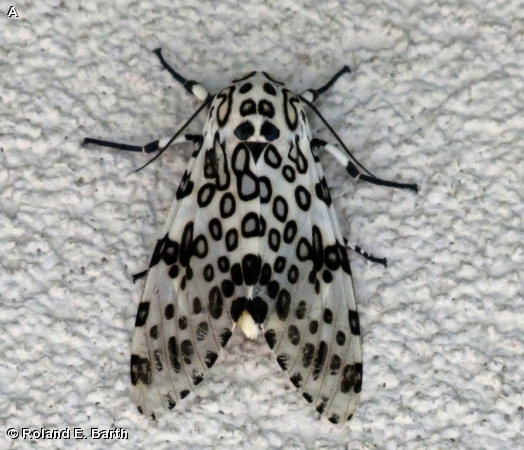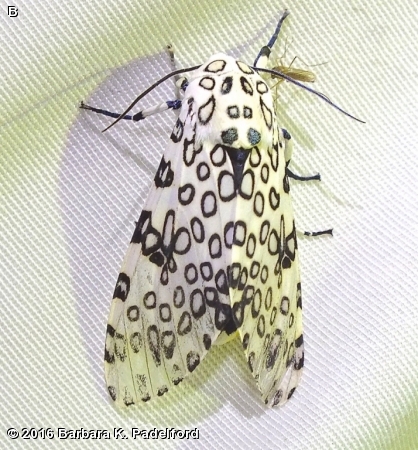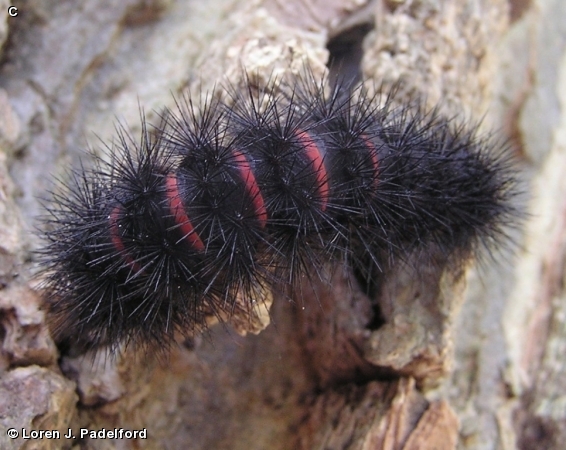
This large moth has a wingspan or 2 3/8 to 3 1/2 inches and is about 1 3/8 inches in length. The forewing is white with large blue-black spots that become mostly hollow at the inner margins. The hindwing is mostly white except for some black shading along the inner margin and some small, black terminal spots near the apex of the wing. The thorax has blue-black spots. The abdomen is blue-black dorsally with orange lateral bands. The larva grows to 3 inches long. It is black with many stiff, black bristles. It has red bands at the segments and red spiracles. When disturbed the caterpillar rolls up and exposes the red bands.
The Giant Leopard Moth is probably common at Fontenelle Forest and Neale Woods. The moth has been photographed at Fontenelle Forest Nature Center and Neale Woods in June and July. The adult is attracted to artificial lights. The caterpillars are commonly seen in spring and fall at Fontenelle Forest.
This moth was formerly named Ecpantheria scribonia. The larval food plants are deciduous trees and low plants including cherry, dandelion, maple, sunflower, violet and willow. The caterpillars hide in leaf litter during the day and feed at night. The nearly mature caterpillar overwinters under logs and tree bark. The adult moth has ears, located behind the bases of the hindwings, which are probably used to detect the echo-location sonar of hunting bats. Some tiger moths have thoracic cymbal organs with which they produce high frequency clicks in response to bat sonar. In one species of Tiger Moth the clicks have been demonstrated to jam bats’ sonar. It is not known if Giant Leopard Moths produce sounds.
Disclaimer: The content of NatureSearch is provided by dedicated volunteer Naturalists of Fontenelle Forest who strive to provide the most accurate information available. Contributors of the images retain their copyrights. The point of contact for this page is: Babs Padelford.





